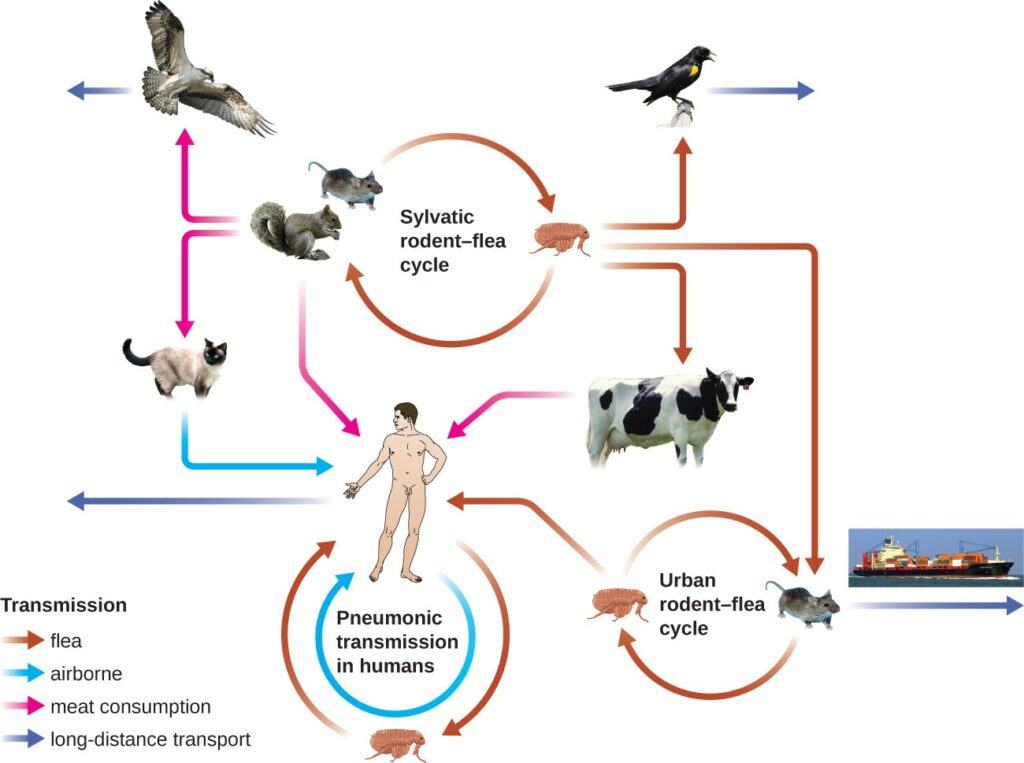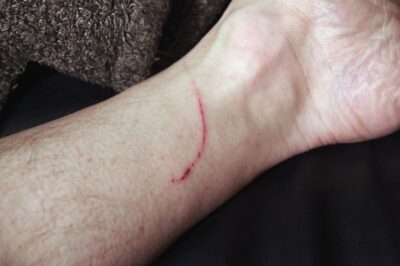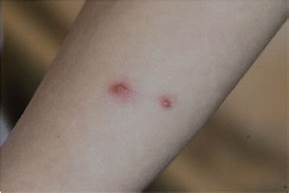If you have ever asked, what is cat scratch disease, here you should find some answers. Cat Scratch Disease (or CSD) also goes by the name of cat scratch fever or bartonellosis. It gets started from a bacterial infection.
At least eight species of Bartonella can cause the human infection, but Bartonella henselae becomes the most common species found in cats. Besides cats and humans, it can also affect dogs and other animals.
CSD gets its name because it has often started in humans through a cat scratch. The bacteria become transmitted through cat fleas, and possibly other biting flies and ticks.

The flea ingests blood containing Bartonella from an infected cat, the bacteria replicates in the flea, who then sheds it in feces. These feces can infect humans through scratches or other skin abrasions. The infection can also travel through the eye.
How Cats And People Are Infected
Cats can become infected with B. henselae from flea bites and flea dirt (droppings). The cat picks up the infected flea dirt by scratching and biting at fleas, getting the infected material under their nails and between their teeth.
A cat could also get an infection if he gets in a fight with another infected cat. Then, when the infected cat bites or scratches a person hard enough to break the skin, the bacteria gets passed to him/her.

Don’t let your cat lick at wounds or scabs. If he has contracted B. henselae, he can spread it to you.
What Symptoms Will You Notice?
Though considered a mild infection that usually goes away on its own, at times CSD from the Bartonella species causes more serious problems. Medical people do not understand at this time why some people can contract this more severe form.
Typical signs of the CSD condition include mild fever, chills, and fatigue. Also, you might find these symptoms accompanied by enlarged lymph nodes and mild skin lesions. Possibly, the membrane that covers the white of the eye and inside the eyelid could also develop lesions.
The good news: Most of these symptoms only last for a few days. However, enlarged lymph nodes can persist for weeks or even months.
How Is CSD Treated?
At your health care facility, they will figure out the best treatment based on several factors:
- Your age
- Overall health and medical history
- What is the severity of your condition?
- Do you have allergies to certain medicines, and can you handle procedures well?
- How long should the condition last?
- Your input
Rare Complications Can Be Serious
Though rare, CSD can cause some serious complications. It can affect the brain, eyes, heart, or other internal organs. Such rare complications prove more apt to occur in children 5 to 14 years of age, or in people who have a weakened immune system.
Ways To Prevent Or Avoid CSD
Wash hands carefully after handling the cat.
Play gently, so the cat doesn’t scratch or bite.
Don’t let the cat lick you, especially on mouth, nose, eyes, or open wounds.

Work on flea control.
Don’t tease or provoke the cat.
Don’t pet stray or feral cats.
How Did Human Bartonellosis First Start?
Before 1990, scientists knew only two disease-causing species of Bartonella . However, since 1990, researchers have found more than 24 Bartonella species, with at least half of these confirmed as animal or human pathogens.
Since 1990, researchers have done a great deal of scientific research and medical inquiry concerning the Bartonella organisms. The veterinary health care professionals will alert us first to watch for an outbreak of this disease.
Cats Are Not The Only Source Of Transmission And Infection
Though many cases of this disease occur after a cat has scratched you, they may not have caused your infection. It could come through environmental sources, various biting insects such as fleas or ticks, or other animal hosts.
How Can I Reduce The Risk Of CSD?
Keep kitty’s nails trimmed short. Use year-round flea control for all your pets. Keep the cat indoors. Avoid playing rough with your cat. Wash bites or scratches immediately, using soap or disinfectant.
The best way to prevent contracting CSD: Of course, avoid being scratched or bitten by cats and kittens. (By the way, a kitten can pass on this disease, as they are more apt to bite and scratch when they play.) Be sure to wash any bites or scratches right away, and don’t allow your cat to lick your wounds.

If the scratch or bite becomes red or swollen, or if the lymph nodes become enlarged, or if you develop flu-like symptoms, contact your health-care provider.
We are lucky in Alaska because we do not have a severe flea problem. They don’t like our cold winters. However, if you have a flea problem in your area, keep up your vigilance for any sign of CSD.
References I used for this post: https://cdc.gov/healthypets/diseases/cat-scratch.html vcahospitals.com/know-your-pet/cat-scratch-disease hopkinsmedicine.org/health/conditions-and-diseases/cat-scratch-disease familydoctor.org/condition/cat-scratch-disease/


Cat scratch fever always reminds me of Ted Nugent. LOL One of my kitties gifted me a case of CSF via our usual rough play where my role was that of a human scratching post. It was not uncommon for me to sport at least two or three scratches on my arms and hands from roughhousing with the meowsers.
Only once did one of those scratches become infected and I had to take a round of some sort of antibiotic to get it cleared up. Hasn’t happened since. I have found though, that if you apply Neosporin to the fresh scratches, they heal up much faster.
I guess you could say you were lucky. I’ve never had it, thank goodness. Thanks for the suggestion about the Neosporin; perhaps that acts as a good preventative, if caught early.